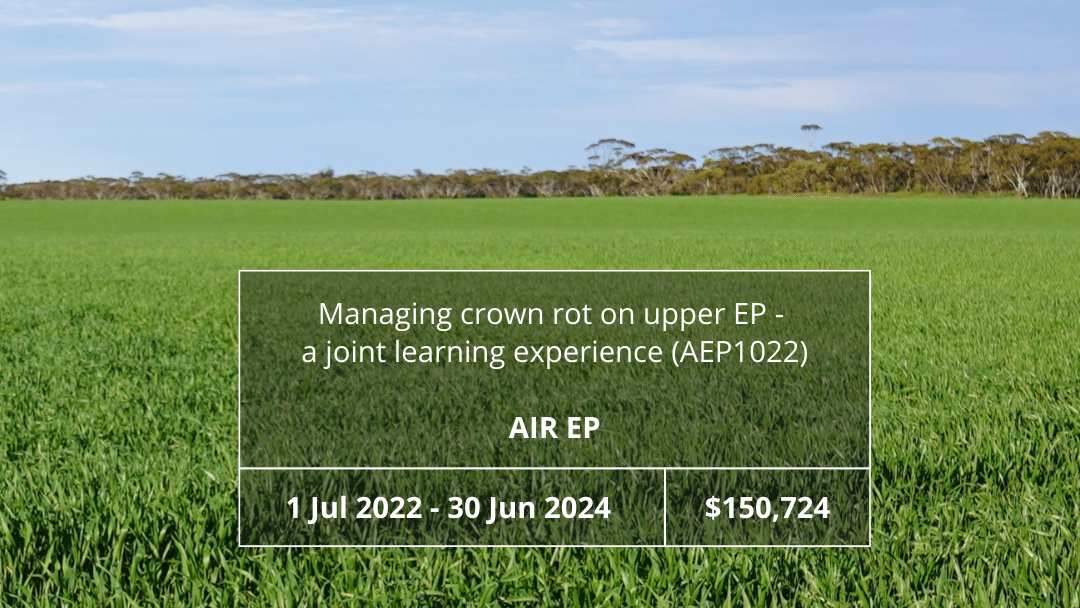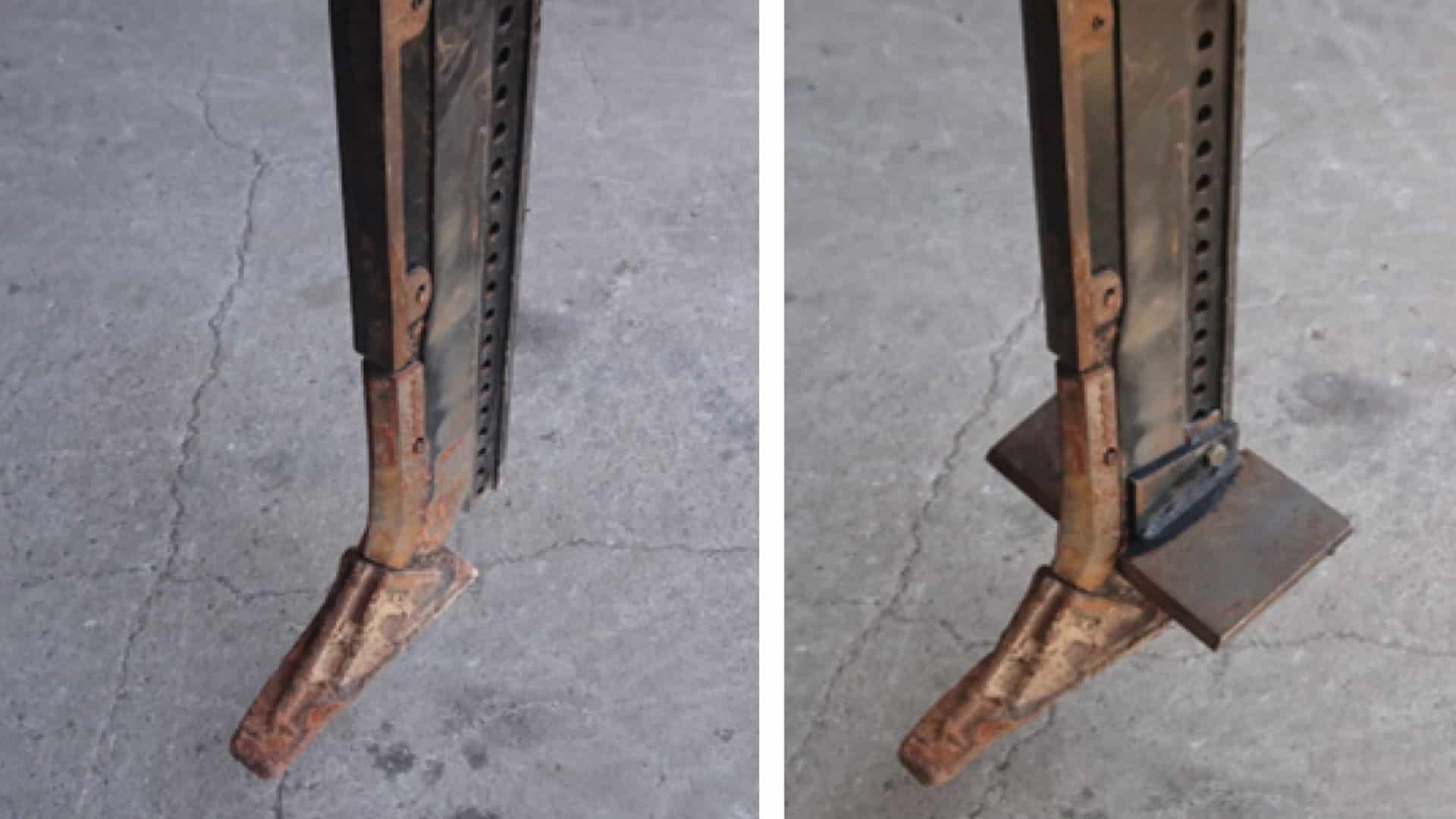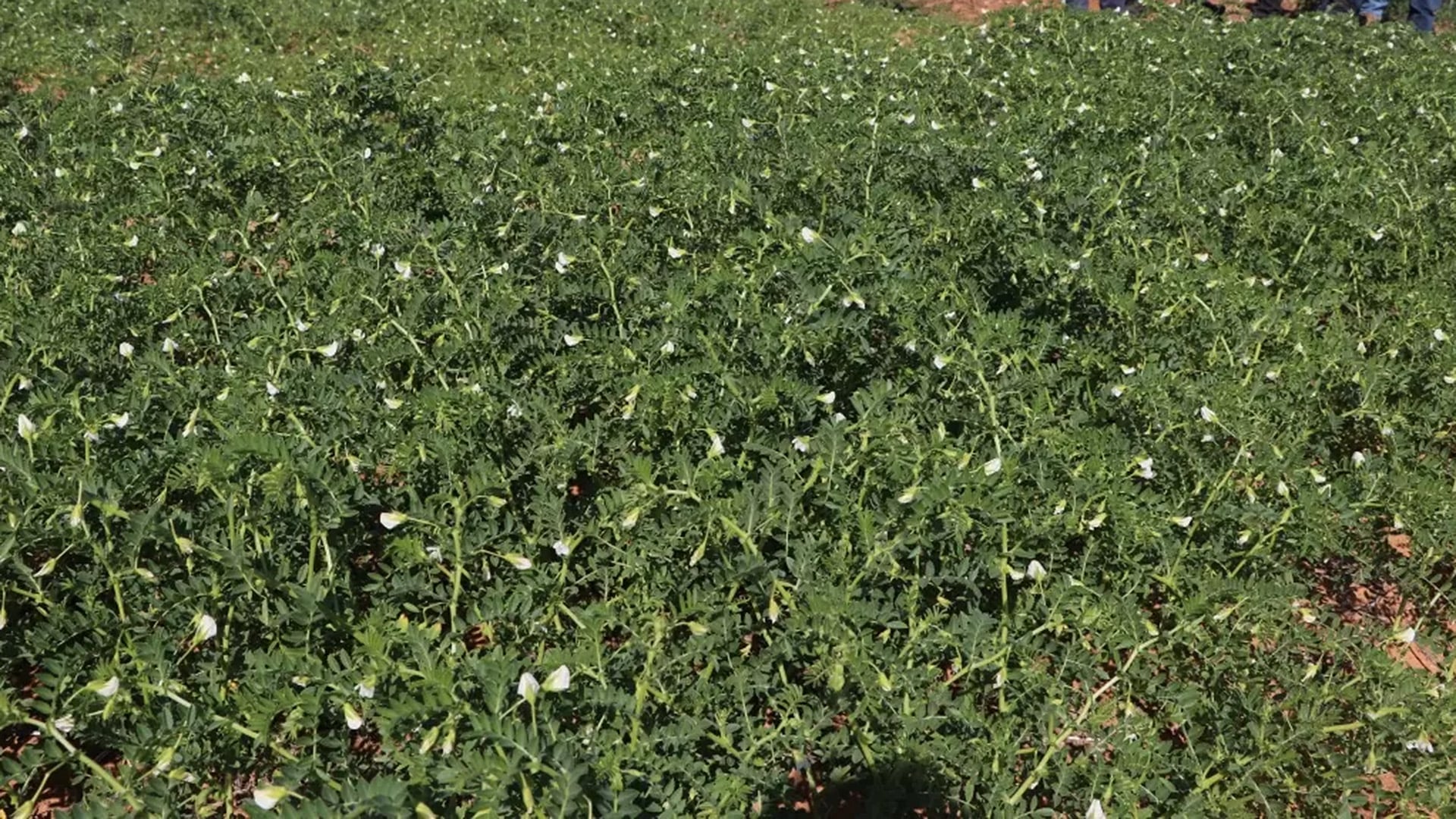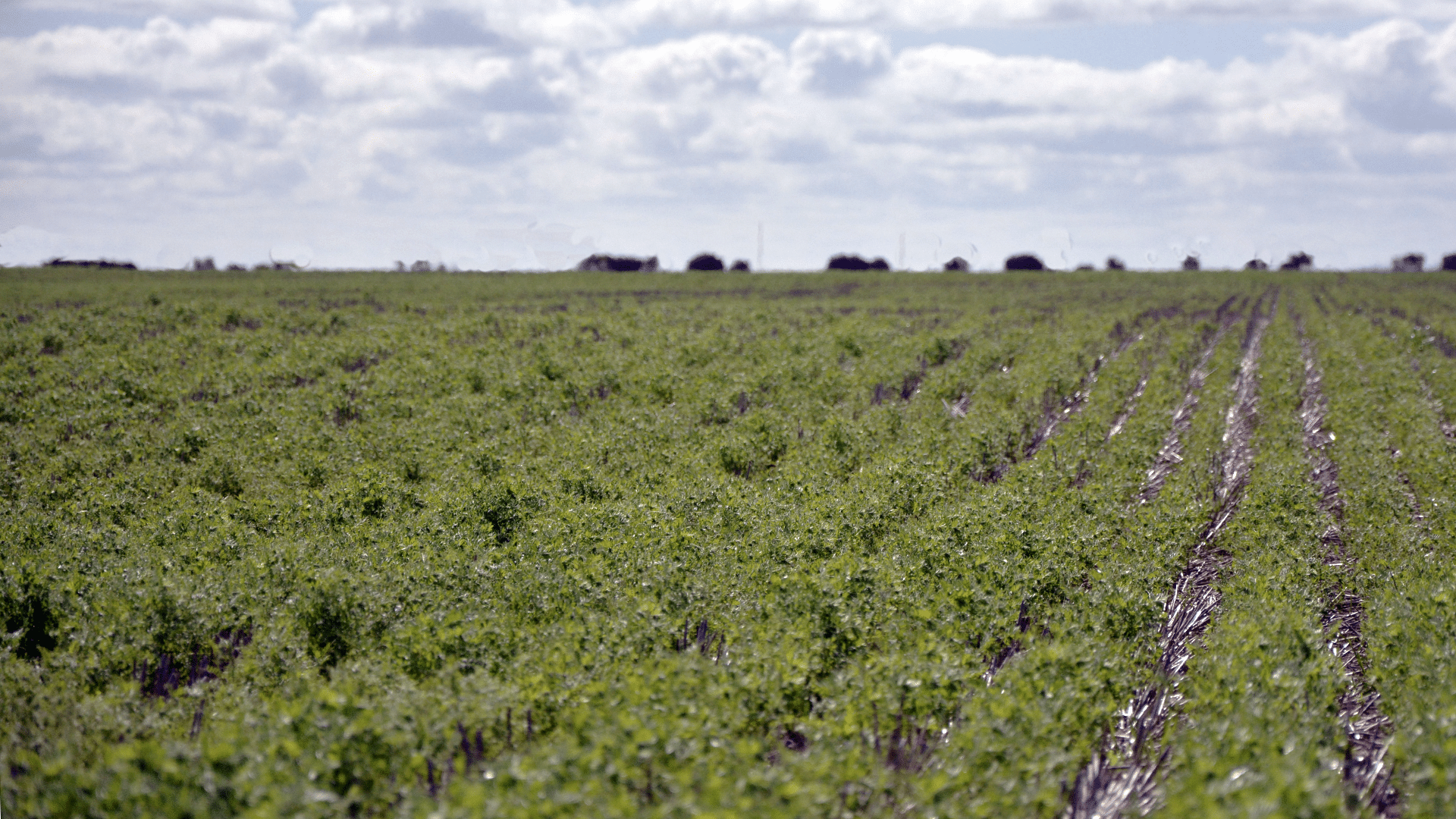START
FINISH

Summary
This project aims to reduce yield losses due to crown rot, increasing the amount and consistency of grain for export; increase the adoption of existing and novel options for managing crown rot; and improve the ability of farmers and advisers (and researchers) to understand trials and demonstrations and how to interpret the results for application and implementation in local farming systems.
Project Participants
Naomi Scholz, AIR EP
The research
This project aims to reduce yield losses due to crown rot, increasing the amount and consistency of grain for export; increase the adoption of existing and novel options for managing crown rot; and improve the ability of farmers and advisers (and researchers) to understand trials and demonstrations and how to interpret the results for application and implementation in local farming systems.
Funding
$150,724
More information
Naomi Scholz
T: 0428 540 670
E: [email protected]



